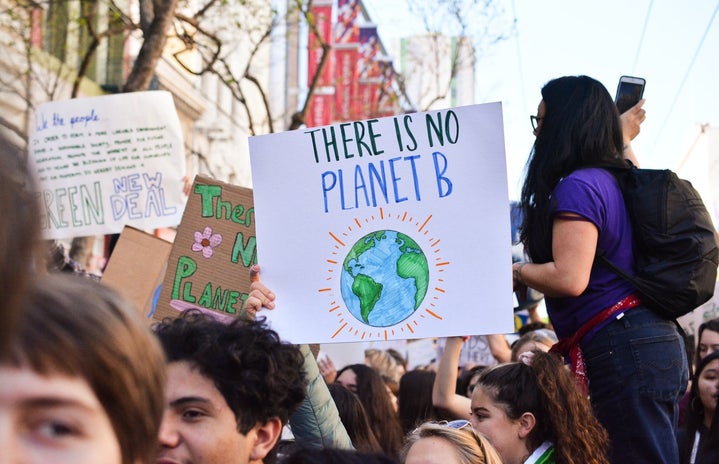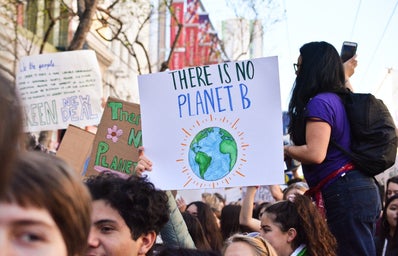One of the biggest threats our world faces is that of Climate Change. Not only does it threaten to degenerate the environment but it also deeply impacts our health and can cause life-threatening diseases and illnesses. However, the environment in itself does not contribute to all these factors that add elements of threat to the world. It is the human race that takes up the majority, if not the entire burden of it. Putting it this way, one would think the climate fight is oddly yet very sadly initiated by people and is a people vs climate thing but that’s where social structures come into play as historically the burden of climate to this day is pushed onto those that are considered to be lesser in accordance with social hierarchies. The environmental movement is historically racist in its tendencies. Many environmental activists are negligent to the added layers of oppression that the BIPOC community experiences in the face of environmental concerns which makes the movement complacent in its actions.
That is why one of the main criticisms that climate activists have been receiving lately is based on the lack of inclusivity in their activism and approach. Inclusivity in climate policies is not a matter of being an added bonus or a trend but a necessity that is attached to the core problems that come from the ignorance towards the climate.
SACRIFICE ZONES AND INTERSECTIONAL ENVIRONMENTALISM:
The marginalized bear the maximum burden of government regulations, and consumerist habits of the urban classes as their communities are treated as garbage dumps filled with landfills, pollution with hardly any access to clean air, water, or greener soil to live in. These areas and regions are known as “sacrifice zones”. They are intentionally used as dumps to ensure that half the environment is safe and the urban classes reap the benefits of it, leading a good quality of life while actively violating the lives of people who live in these communities that are treated as sacrifice zones. The sacrifice zones comprise largely of black and brown people. In India, caste and poverty are made to take up this space as the poorer sections experience larger environmental consequences. Not only is this showcasing layers of racism by putting marginalized lives at risk but is antithetical to what the climate movement aims to achieve. In this way, activists are called out for not only their disregard for the lives of the marginalized but their inability to fully advocate for all the elements that encompass the environment.
Simply calling for climate change, overlooking racial injustice, and neglecting the facts that suggest that marginalized face the most amount of consequences is rooted in oppression and not an accurate representation of the ground reality. It is another way of perpetuating state structures and completely violating their lives. The marginalized are more prone to problems like asthma, lung diseases, lead poisoning, and a spectrum of health concerns that can come from environmental issues. To combat this, Leah Thomas, an environmental activist came up with the phenomena of “intersectional environmentalism,” challenging activists to be inclusive, equitable, and just in their process.
It highlights the interconnectedness of the sufferings of the most vulnerable and the climate. It advocates for people and the environment. It lays importance on the fact that everyone deserves an equitable share in making the most of a sustainable environment and not just a hand few by putting other’s lives at stake. It shows how even a fight that is to be initiated and propagated equally reflects on the social injustices of society. Given that the statistics suggest that the marginalized sections experience not just one or two but the majority of the harmful environmental consequences, social justice needs to be a part of environmental change. By not addressing privilege in environmentalism, the concept stagnates and social injustices continue to prevail. Advocating against sacrifice zones is fundamental to environmental activism. Environmental change is directly proportional to social change and cannot fully function without it.
WHAT WE CAN DO:
One of the ways we can actively play a role in advocating for intersectional environmentalism is by acknowledging and learning about the importance of highlighting social inequality in climate change. It is just as important to learn more about our role in this and where our actions might be contributing to forming “sacrifice zones”. Having conversations around this and actively being socially aware while being eco-conscious is one of the first steps that we can take.
BOOKS, ARTICLES, AND OTHER SOURCES:
1. Winning the Green New Deal: How we can and why we must – Varshini Prakash and Guido Girgenti
2. Toxic Communities: Environmental Racism, Industrial Pollution and Residential Mobility – Dorceta
3. Why race matters when we talk about the Environment – Lauren Reid – Greenpeace
4. Why Environmental Justice is essential for a sustainable future – Leah Thomas – The Good Trade
5. Intersectional Environmentalism is our urgent way forward – Leah Thomas – The Good Trade
“One day, I really hope, it would be my biggest dream, if we don’t have to preface environmentalism with the word intersectionality. One day I hope when people think of an environmentalist they automatically think of someone that advocates for the protection of both people and planet because we’re all a part of the great big ecosystem and some humans unfortunately, are endangered and it is our duty as environmentalists to fight for them in the same way we fight against the fossil fuel industry, in the same way we fight for conservation, and a greener future. Environmentalists have a responsibility, in my opinion, and a role in the fight for social justice.” – Leah Thomas, pioneer of intersectional environmentalism


